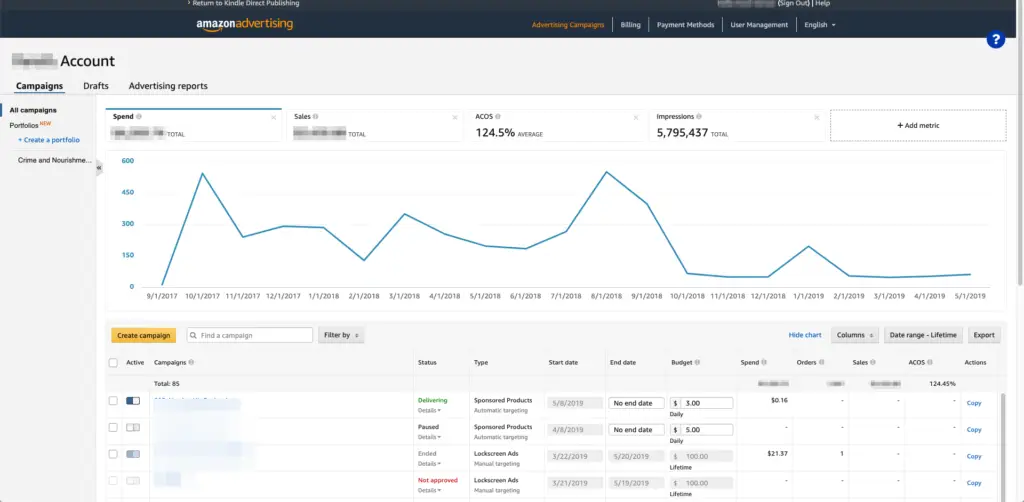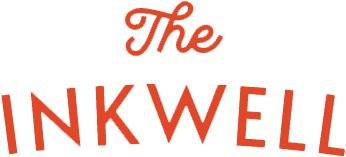Have you ever dreamt of holding your book in your hands, your name proudly displayed on the cover? Of seeing your words touch the hearts and minds of readers worldwide, and building a fulfilling career fueled by your passion for storytelling?
In 2023, independent authors raked in a staggering $2.86 billion, proving that traditional publishing is no longer the sole gateway to literary success.
So, what exactly is self-publishing? Simply put, it’s taking the reins of your book’s publication journey. You, the author, control everything from editing and formatting to cover design, pricing, and marketing. It’s a path paved with both opportunity and responsibility, offering unprecedented creative freedom and the potential for significant financial rewards.
However, let’s not sugarcoat it: self-publishing also comes with distinct challenges. From navigating the technical aspects to tackling marketing and promotion, the journey requires dedication, learning, and strategic planning. But fear not; this comprehensive guide will be your compass, equipped with the knowledge and tools you need to chart your course to self-publishing success in 2024.

What awaits you on this exciting adventure?
- Demystifying the process: We’ll break down the self-publishing journey into clear, actionable steps, guiding you from manuscript preparation to publication and beyond.
- Genre considerations: Whether you’re crafting a heart-pounding thriller or a heartwarming children’s tale, we’ll explore the unique opportunities and challenges within different genres.
- Tools and resources: Discover the best formatting software, design platforms, and marketing strategies to make your book shine.
- Unveiling the rewards: Dive into the financial potential, creative freedom, and personal fulfillment that await successful self-published authors.
- Navigating the challenges: Get equipped to tackle common hurdles like marketing obstacles, production costs, and reader engagement.
By the end of this guide, you’ll be armed with the knowledge and confidence to embark on your self-publishing journey.
Your voice deserves to be heard, and this path empowers you to share your story with the world on your own terms.
This guide is packed with practical steps, insights, and resources to propel you on your self-publishing journey. To maximize your learning, grab a pen and paper to capture key takeaways, and settle in with your favorite beverage. Think of it as your personal roadmap to navigate the exciting world of self-publishing!
Table of Contents
Part One: Before You Begin
Launching your book independently requires careful consideration. Take a moment for honest introspection and answer these important questions to guide your choice confidently.
Is Self-Publishing Right for You?
- Passion ignites the journey: Does telling stories fuel your soul? Are you committed to seeing your creation through, even amidst challenges? If unwavering passion doesn’t propel you, the self-publishing road might feel arduous.
- Dedication drives results: Are you prepared to wear multiple hats? Editing, formatting, marketing, and even accounting become your domain. Be ready to invest time, effort, and potentially resources to learn and succeed.
- Learning fuels growth: Are you comfortable navigating new technologies and embracing continuous learning? Mastering self-publishing requires research, exploring tools, and staying informed about industry trends.
- Community fosters support: Do you enjoy connecting with other authors and building a network? Collaboration, resource sharing, and mutual encouragement are invaluable assets in the self-publishing world.
If you answered “yes” to these questions, you possess the foundation for self-publishing success! However, every path has its unique landscape. So, let’s compare self-publishing and traditional publishing to help you choose the route that aligns best with your vision:
Self-Publishing vs. Traditional Publishing
| Feature | Self-Publishing | Traditional Publishing |
| Creative Control | Full control over content, design, and publishing timeline | Limited control, publisher handles most aspects |
| Publishing Timeframe | Faster publication timeframe, often weeks or months | Slower process, can take months or even years |
| Financial Rewards | Potentially higher royalties (70-85%), but initial costs borne by author | Lower royalties (10-15%), publisher covers initial costs |
| Marketing & Promotion | Author shoulders marketing responsibility | Publisher handles significant marketing efforts |
| Distribution & Reach | Access to major distribution channels like Amazon, but requires effort to reach wider audience | Wider initial reach through publisher’s network, but limited control over distribution |
| Advance Payment | No advance payment | Can receive an advance payment, but royalties may be lower |
| Expertise & Support | Learning & navigating processes independently | Publisher provides editorial, design, and marketing expertise |
The “right” choice depends on your individual goals, personality, and resources. Some creators thrive on the complete control and potential for higher rewards of self-publishing, while others prefer the support and established reach of traditional publishers. Weighing these factors with introspection will guide you towards your ideal publishing path.
Genre Considerations: Where Your Story Thrives
Self-publishing is a vibrant ecosystem, with each genre boasting its own passionate audience. By understanding the hottest trends and high-performing genres, you can strategically tailor your approach and set yourself up for success.
Romance
Reigning supreme, romance novels account for nearly 50% of all self-published ebooks. Subgenres like contemporary, paranormal, and historical romance capture hearts globally, offering vibrant communities and engaged readers. Statistically, romance self-published ebooks earn an average royalty rate of 75%, highlighting the significant financial potential.
Science Fiction & Fantasy
These genres represent a thriving market for authors who can capture readers’ imaginations, with self-published sci-fi/fantasy works capturing a whopping 58% of the market share. No wonder they’re so popular! Thrilling adventures, immersive world-building, and loyal fanbases make these genres a lucrative choice for many authors. Data reveals an average royalty rate of 67% for self-published sci-fi/fantasy ebooks, further fueling the growth of this dynamic sector.
Mystery & Thriller
Suspenseful plots and edge-of-your-seat narratives keep readers guessing in these popular genres. While representing 11% of self-published ebooks, mystery/thriller works still boast an average royalty rate of 68%, making them a compelling option. With targeted marketing and a gripping story, authors can stand out in this competitive field.
Non-Fiction
Sharing your expertise and valuable knowledge—that’s the power of non-fiction. From self-help guides to business advice, self-published non-fiction makes up a growing 9% of the market. By establishing yourself as an authority in your niche, you can cultivate a dedicated readership, achieve financial success, and even make a positive impact on the world.
Market trends should never dictate your passion. Choose a genre that aligns with your voice and storytelling strength.
Beyond genres, conducting thorough market research is crucial. Use tools like Amazon KDP Select’s market research option, explore bestseller lists, and engage with genre communities. Analyze competitor pricing, cover styles, and blurbs to gain valuable insights.
Developing Your Book & Manuscript
It’s time to transform your initial concept into a captivating manuscript. This stage involves brainstorming, outlining your narrative, and meticulously translating your ideas onto the page. Let’s explore the strategies that will guide you through this process:

1. Brainstorming Strategies
Don’t underestimate the power of a good brainstorm! Grab a notebook, unleash your creativity, and explore these techniques:
- Mind mapping: Visually connect ideas, characters, and plot points to spark new possibilities.
- Freewriting: Set a timer and write continuously without stopping, capturing any thought that emerges.
- Character exercises: Develop your characters by creating profiles, conducting interviews, or exploring their backstories.
- Research: Dive deep into your chosen genre, gathering inspiration from successful works and real-world experiences.
Brainstorming is a messy, explorative process. Embrace the chaos, jot down everything, and don’t be afraid to discard ideas that don’t resonate.
2. Outlining Strategies
An outline serves as the backbone of your book, providing structure and focus and ensuring your narrative flows smoothly. Consider these approaches:
- Plot point outlining: Identify key turning points in your story, ensuring a logical and engaging progression.
- Scene-by-scene outlining: Map out individual scenes, detailing their purpose, characters involved, and emotional impact.
- Software tools: Use an outlining software like Scrivener or Trello to visually organize your ideas and track progress.
An outline is a living document; be flexible and adapt it as your story evolves.
The ideal outlining style depends on your writing preferences and genre. Experiment and find what works best for you.
3. Writing with Purpose
Now comes the magic—pouring your words onto the page and bringing your characters to life! Here are some strategies to guide your writing journey:
- Set realistic goals: Break down your project into manageable chunks and set daily or weekly writing targets.
- Establish a writing routine: Find a dedicated writing space and carve out consistent time in your schedule.
- Embrace different writing styles: Experiment with narrative perspectives, dialogue structures, and descriptive language to keep your readers engaged.
- Join a writing community: Connect with other authors for support, feedback, and motivation.
Writing is a marathon, not a sprint. Celebrate your progress, don’t be discouraged by setbacks, and above all, enjoy the process of creating your unique story.
Part 2: The Self-Publishing Process
Is your manuscript ready and polished? Now it’s time to make your story accessible to all kinds of readers! Formatting might seem confusing, but don’t worry! This guide will navigate you through the essentials for three formats: ebooks, print books, and audiobooks. Different readers prefer different experiences. By mastering each format, you’ll reach a wider audience and boost your book’s chances of discovery and sales.
Formatting Your Book
Gone are the days of one-size-fits-all book formats. Today’s savvy readers demand choice, transitioning seamlessly between crisp e-books on their tablets, beautifully crafted print editions on their shelves, and captivating audiobooks narrated by talented voices. By embracing these diverse formats, you not only cater to individual preferences but also open your book to wider audiences eager to engage with your story in their preferred way.
Here’s a deeper dive into the unique formatting requirements and best practices for each platform:

1. Ebook Formatting
- Epub & KPF: These two dominant ebook formats unlock major distribution channels like Amazon KDP and Apple iBooks. Leverage user-friendly tools like Calibre or Vellum (Only Available for Mac) to create industry-standard ebooks with flawless chapter divisions, clear headings, and embedded fonts for a seamless reading experience on any device.
- Reflowable vs. Fixed Layout: Reflowable format allows readers to adjust font size and layout for optimal comfort, while fixed layout suits complex designs, children’s books with illustrations, and graphic novels, ensuring every element remains precisely as intended.
- Metadata: Well-written and SEO optimized book titles, engaging descriptions, and relevant keywords are your gateway to reader discovery through online store searches, so invest time in crafting them to perfection.
2. Print Book Formatting
- Trim Size & Page Layout: Choosing the right trim size (e.g., 5×8″ or 6×9″) and mastering page layout are crucial. Use industry-standard software like Adobe InDesign or Microsoft Word to ensure proper margins, text placement, and high-resolution image integration for a professional look and feel.
- Font & Readability: Prioritize clear, easy-to-read fonts like Times New Roman or Garamond. Remember, reader comfort is paramount. Adhere to industry standards for line spacing and paragraph breaks to guide readers effortlessly through your story.
- ISBN & Barcodes: Don’t forget the essentials! Secure an ISBN (International Standard Book Number) to uniquely identify your book and generate a barcode for retailers, ensuring smooth distribution and sales tracking.
3. Audiobook Formatting
- Narration & Production: The magic of audiobooks lies in the voice. Partner with professional narrators whose style aligns with your story, or self-record. Use user-friendly editing software like Audacity to polish audio quality and adhere to platform-specific technical requirements for a pristine listening experience.
- Chapter Breaks & Metadata: Seamless listening hinges on accurate chapter markers. Ensure they align precisely with your ebook and print counterparts. Additionally, craft a compelling audiobook description that captures the essence of your story and entices listeners to hit play.
Mastering different formats unlocks a world of possibilities. By harnessing the power of available resources, diligently researching format-specific best practices, and rigorously testing your files before publishing, you’ll ensure a flawless launch for your book in all its forms.
Formatting Tools & Software Options
Now that you know the unique formatting requirements for each platform, let me equip you with the tools and software that will transform your manuscript into polished, professional, and reader-ready formats.
The ideal choice depends on your budget, technical expertise, and desired features.
1. Free & User-Friendly Options
- Calibre: This open-source powerhouse excels at ebook formatting, supporting both epub and mobi formats. It offers user-friendly tools for editing metadata, converting files, and ensuring industry-standard compliance. However, it might lack advanced design features for complex layouts.
- Sigil: Another open-source option, Sigil is more technical than Calibre but offers greater control over ebook formatting. Its WYSIWYG editor allows you to directly modify code for a customized experience. However, it has a steeper learning curve and might be less intuitive for beginners.
- Google Docs: Surprisingly versatile, Google Docs allows basic ebook formatting (primarily epub) and print book formatting using add-ons and templates. While it can handle simple layouts, complex designs or advanced features might require additional plugins or expertise.
- Microsoft Word: A familiar option for many, Word allows basic ebook formatting (primarily epub & kpf) and print book formatting. While it can handle simple layouts, complex designs or advanced features might require additional plugins or expertise.
2. Paid & Feature-Rich Solutions
- Scrivener: Beloved by authors for its organizational features and writing tools, Scrivener also facilitates ebook formatting for epub and mobi formats. It excels at outlining, chapter management, and metadata editing, but advanced design customization options are limited.
- Adobe InDesign: The industry standard for professional print book formatting, InDesign offers complete control over layout, typography, and graphics. However, its learning curve can be steeper and requires a paid subscription.
- Atticus: This all-in-one platform streamlines the entire self-publishing process, including formatting for ebooks and print books. It offers user-friendly interfaces, pre-designed templates, and even distribution assistance, but comes with a one-time fee.
The optimal tool is the one that empowers your creativity and aligns with your technical comfort level. Explore free trials, research user reviews, and experiment to discover your formatting champion!
The Power of Professional Formatting
Formatting yourself can be handy, but keep in mind that your book’s first impression matters. Think about it: Your polished story shouldn’t be let down by inconsistent formatting, typos, or layout errors. Readers notice, and unprofessional presentation can hurt sales, reviews, and your overall credibility.

Professional formatting elevates your book to a new level, offering:
- Polished consistency: Flawless formatting ensures fonts, margins, spacing, and headers remain consistent throughout, creating a seamless reading experience.
- Industry-standard compliance: Professional formats adhere to platform-specific requirements, guaranteeing smooth distribution and publication on major retailers like Amazon and Apple.
- Enhanced readability: Expert formatting improves layout, line spacing, and kerning, ensuring optimal page turns and minimizing eye strain for your readers.
- Credibility and professionalism: A professionally formatted book signals to readers that you take your work seriously and invest in quality, boosting their trust and engagement.
Investing in professional formatting is an investment in your book’s success. But where do you begin?
Don’t worry, your search for exceptional design and formatting ends here! I offer comprehensive book design services tailored to your unique vision and genre. With expertise in crafting captivating covers, creating visually engaging interiors, and ensuring flawless formatting across all platforms, I’ll transform your manuscript into a masterpiece ready to wow your readers.
Contact me today for a free consultation and discover how I can collaborate with you to design a book that reflects your creativity and professionalism.
Professional formatting is not just an expense, it’s an investment in your authorial journey. Don’t settle for anything less than your absolute best.
Self-Publishing Platforms: Choosing Your Launchpad
Choosing the right self-publishing platform is our next step. This section of the guide compares five key players: Amazon KDP, Smashwords, IngramSpark, Draft2Digital, and Barnes & Noble Press. breaking down features, costs, and distribution channels so you can make an informed decision for your publishing journey. By understanding their strengths and aligning them with your specific needs, you’ll find the perfect launchpad for your literary journey.
1. Amazon KDP
- Reach: Unmatched access to millions of readers through the Amazon store and Kindle devices.
- Royalty rates: 70% for ebooks priced above $2.99, up to 35% for lower-priced ebooks.
- Costs: Free to publish, additional fees for printed proofs and expanded distribution.
- Features: User-friendly interface, marketing tools like Kindle Direct Publishing Select, pre-order options.
- Distribution: Global reach through Amazon stores, Kindle Unlimited subscription service, and other retailers like Apple iBooks.
2. Smashwords
As of February 8, 2022, two self-publishing giants joined forces! Draft2Digital acquired Smashwords, uniting their expertise and resources to empower authors further. This exciting merger brings together the best of both platforms, offering authors a wider range of tools, distribution channels, and support options to navigate the self-publishing journey with confidence.
3. IngramSpark
- Reach: Global distribution to retailers like Barnes & Noble, libraries, and online stores.
- Royalty rates: Up to 70% for print books, 60% for ebooks (excluding retailer fees).
- Costs: Free to publish, printing costs based on format and quantity, set-up fees for expanded distribution.
- Features: Print and ebook publishing, expanded distribution options, ISBN and barcode services.
- Distribution: Reaches physical and online retailers, libraries, and educational institutions worldwide.
4. Draft2Digital
- Reach: Distributes to major retailers like Apple iBooks, Barnes & Noble, Kobo, Google Play, and more.
- Royalty rates: 70% for ebooks, 60% for print books (excluding retailer fees).
- Costs: Free to publish, optional subscription for additional features like pre-orders and wider distribution.
- Features: User-friendly interface, wide retailer distribution, marketing tools, global pricing options.
- Distribution: Distributed to over 400 retailers and libraries worldwide.
5. Barnes & Noble Press
- Reach: Sell your book globally in Barnes & Noble, libraries, and online stores. Expand to more retailers for a fee.
- Royalties: Earn up to 70% on print, 60% on ebooks (excluding retailer fees).
- Costs: Free to publish, but pay for printing and potential expanded distribution fees.
- Features: Publish print & ebooks, get free ISBN & barcodes, access marketing tools.
- Distribution: Reach Barnes & Noble stores, major online retailers, libraries & educational institutions (potentially wider with paid expansion).
Comparison Table: Navigating Your Platform Choice
| Feature | Amazon KDP | IngramSpark | Draft2Digital | Barnes & Noble Press |
|---|---|---|---|---|
| Royalty Rate | Up to 70% | Varies (70-85%) | Up to 80% | Up to 65% |
| Distribution Channels | Amazon & partner stores (limited reach) | Global bookstores & libraries (widest reach) | Major retailers & libraries (wide reach) | Barnes & Noble & select partners (limited reach) |
| Pricing | Free | Paid options available | Free (with paid upgrades) | Paid options available |
| Ease of Use | Beginner-friendly interface | Moderate learning curve | User-friendly interface | Moderate learning curve |
| Marketing Tools | Limited built-in tools | Limited built-in tools | Various marketing integrations | Limited built-in tools |
| Community & Support | Large online community | Industry-respected support | Helpful customer support | Smaller community |
| Flexibility | Limited control over formatting & pricing | Extensive control over formatting & pricing | Moderate control over formatting & pricing | Moderate control over formatting & pricing |
| Print Book Features | Basic | Advanced | Basic | Basic |
| Audiobook Features | No | Yes | Yes | No |
The “perfect” platform doesn’t exist. Consider your priorities: Do you prioritize global reach, high royalty rates, print distribution, specific marketing tools, or ease of use? Weigh these factors alongside your genre, target audience, and budget to make an informed decision.
self-publishing empowers you to take control of your journey. Choose wisely, explore resources, and confidently embark on your path to literary success!
Bonus Tip: If you’re still undecided, consider starting with Draft2Digital, which allows you to distribute your book to multiple retailers simultaneously. This can be a great way to test the waters and see where your book performs best before committing to a single platform.
Do you have any questions about choosing a self-publishing platform? Let me know in the comments below!
Book Cover Design
Your book’s cover is the first impression, the silent salesperson captivating readers and enticing them to delve into your world. In a crowded marketplace, professional and genre-specific design sets your book apart, boosting discoverability, sales, and reader engagement.
The Power of Professional Design
While DIY options exist, consider the undeniable advantages of entrusting your cover to a professional book designer:
- Expertise & Genre Savvy: A professional grasps the nuances of your chosen genre, crafting a cover that resonates with target readers and aligns with industry standards. Imagine a captivating romance cover adorned with elegant swirls instead of a brooding, action-packed design. Mismatched aesthetics can deter readers, while genre-specific elements act as silent invitations.
- Technical Proficiency: Professional designers understand file formats, resolution requirements, and platform specifications, ensuring your cover looks flawless across all retail channels. This eliminates technical hiccups and delays, propelling your book seamlessly towards publication.
- Creative Vision & Originality: Experienced designers bring fresh perspectives and artistic expertise to the table. They translate your ideas into visually stunning artwork that captures the essence of your story and stands out from the competition. Remember, a unique and memorable cover becomes your brand and leaves a lasting impression long after readers click “buy.”
- Marketing Prowess: Many professional designers understand the marketing aspect of cover design, incorporating elements that entice readers and grab attention on thumbnails and online listings. This crucial aspect boosts discoverability and sets your book on the path to success.
Looking for a design partner who understands your vision and delivers exceptional results? Look no further! I offer comprehensive book cover design services tailored to your unique genre and preferences.
Exploring DIY Options: A Balancing Act
While DIY cover creation tools exist, investing in professional book cover design can be an investment in your book’s success. If you choose the DIY route, consider these essential factors:
- Design Skills & Software: Do you possess the graphic design skills and software proficiency needed to create a professional-looking cover that adheres to industry standards? Remember, a subpar cover can negatively impact your book’s credibility and sales.
- Genre Knowledge: Understanding the visual conventions and expectations of your genre is crucial. Research successful covers in your category and analyze the elements that make them work. A fantasy cover overflowing with neon colors might appear jarring, while a minimalist design might not capture the epic scope of your story.
- Copyright & Legality: Ensure you have the legal rights to use any elements you incorporate into your cover. This includes fonts, images, and graphics. Using unlicensed or copyrighted material can lead to legal repercussions and delays.
Explore pre-made cover options that offer design quality and affordability. My store, TheInkwell Vault, features a curated selection of professionally designed, genre-specific covers ready to personalize with your title and author name. These high-quality templates provide a great starting point while ensuring your cover adheres to industry standards and resonates with your target audience.
Your cover is a powerful marketing tool, a silent ambassador telling your story before readers even crack open the first page.
Setting Your Book Price
Pricing your book isn’t just about generating revenue; it’s a strategic dance between attracting readers and ensuring your authorial journey thrives. This section empowers you to navigate this crucial decision, equipping you with knowledge, actionable steps, and free competitor analysis tools to set a price that resonates with readers and fuels your success.

Factors influencing pricing decisions
Before diving into numbers, let’s explore the key elements that shape your pricing strategy:
- Production Costs: Consider formatting fees, cover design expenses, printing costs (if applicable), and any marketing investments you’ve made. Understanding these costs sets a baseline for profitability.
- Royalty Rates: As we have seen before, different platforms offer varying royalty structures. Research your chosen platforms’ rates to ensure your price point generates a satisfying return on investment.
- Market Research: Analyze the pricing trends in your genre. Check out competitor titles, their price points, and reader reviews to gauge acceptable price ranges within your category.
But price isn’t just about internal factors…
Competitor analysis and pricing strategies
Understanding your competition is like having a secret map to market success. By uncovering their strengths and weaknesses, you can refine your pricing strategy, attract the right readers, and stand out on the crowded bookshelf. While free tools don’t offer everything, they can still arm you with valuable insights:
1. Keyword Spy Tools:
- Keyword Sheeter: Uncover trending keywords, competitor rankings, and search volume data. Free plan offers limited searches.
- Ubersuggest: This Chrome extension and free website reveal competitor keyword strategies, estimated traffic, and CPC.
2. Review Analysis Tools:
- Fakespot: Identify fake or incentivized reviews, allowing you to gauge genuine reader sentiment towards competitor books.
- BookAuthority: Analyze author rankings, book popularity, and review sentiment through keywords and reviews. Free plan allows limited searches.
3. Price Comparison Tools:
- Bookbub: Track ebook pricing trends across various retailers and identify market pricing for your genre.
- Keepa: Monitor historical pricing data for competitor books on Amazon and identify potential pricing opportunities.
Actionable Steps:
- Identify niche competitors: Focus on authors within your specific subgenre.
- Analyze keyword overlap: See which keywords you share and where you can differentiate.
- Understand review sentiment: Identify common reader complaints and areas for improvement in your own book.
- Track price fluctuations: Adapt your pricing based on market trends and competitor strategies.
- Remember: Use these tools ethically and focus on learning, not replicating.
By employing these tools and actively researching your competitors, you gain valuable insights to inform your pricing strategy.
Striking the Balance: Affordability & Profitability
The ideal price point balances reader affordability with your profitability goals. Consider these tips:
- Psychological Pricing: Use strategies like ending prices in .99 to appear more attractive to budget-conscious readers.
- Differential Pricing: Experiment with offering different formats (ebook, print, audio) at varying prices to cater to diverse reader preferences and maximize reach.
- Promotional Strategies: Factor in planned promotions (discounts, giveaways) when setting your base price to ensure profitability even with temporary reductions.
Keep monitoring your sales data, reader feedback, and competition over time to adapt and refine your pricing strategy for continued success.
Part 3: Marketing & Promotion
With your meticulously crafted manuscript polished and professionally formatted, it’s time to unveil it to the world. In this crucial section, we’ll discuss marketing and promotion, empowering you to craft engaging campaigns that connect with your ideal readers and propel your book towards stellar results.

First, let’s establish your foundation:
Author Branding & Online Presence
Building a Website
Your author website and social media profiles are your digital home base, connecting you with readers, showcasing your work, and fostering a vibrant community around your literary journey.
This important first step allows you to:
- Cultivate your author brand: Establish a distinct identity that resonates with your target audience, reflecting your personality, genre, and literary voice. Think J.K. Rowling’s whimsical website or Neil Gaiman’s darkly captivating online presence – each reflects their unique brand identity.
- Showcase your work: Create a dedicated space to display your books, share excerpts, and offer valuable content like blog posts, author interviews, or behind-the-scenes glimpses. Imagine a website showcasing your latest thriller filled with chilling excerpts and character profiles, or a platform bursting with colorful illustrations and interactive activities for your children’s books.
- Connect with readers: Foster direct interaction with your audience through engaging content, responding to comments, and even hosting online events. Picture interactive Q&A sessions on your website or lively discussions on your social media platforms – these connections build loyalty and excitement around your work.
- Drive sales: Integrate calls to action, promote upcoming releases, and offer exclusive content to website visitors and social media followers. Visualize a dedicated “buy now” page on your website or targeted promotions on social media, all pushing readers towards purchasing your book.
Ready to craft a captivating online presence that reflects your unique authorial brand? I specialize in designing visually stunning and user-friendly author websites, ensuring your digital home base resonates with your readers and empowers your literary journey.
Now, let’s explore specific platforms and strategies to maximize your online presence, starting with the power of social media…
Authenticity and consistent engagement are essential across all platforms.
Let your unique voice shine through, share valuable content, and build genuine connections with your audience.
Why You Must Use Instagram:
- Reels: Instagram Reels are your rocket ship to reach new readers in a flash. Captivate them with high-energy video snippets featuring book trailers, character teasers, and writing tips. Remember, short and engaging is key!
- Community Connection: Don’t just post, engage! Respond to comments, send and answer DMs, and participate in discussions. Build relationships with readers and fellow authors – they’re your biggest cheerleaders.
- Storytelling: Instagram Stories are your backstage pass. Give your audience exclusive peeks into your writing journey with behind-the-scenes snippets, Q&A sessions, and sneak peeks at your drafts. This fuels reader engagement and creates a sense of community.
How to Use Instagram as an Author:
- Craft your visual identity: Develop a cohesive visual aesthetic that aligns with your genre and brand. Utilize high-quality visuals, consistent color palettes, and strategic storytelling to create a visually captivating feed.
- Embrace the power of hashtags: Research and utilize relevant genre hashtags and author communities to expand your reach and connect with new readers. Participate in popular challenges and trends, but maintain authenticity and avoid feeling forced.
- Storytelling beyond the post: Utilize Instagram Stories for snippets of your writing process, author Q&As, polls, and interactive content. Host book-related challenges, offer sneak peeks at upcoming releases, and create a sense of community around your work.
Publishing Calendar Template:
| Day | Content Theme | Example |
| Monday | Genre-related image + insightful caption | Share a stunning landscape photo for your fantasy novel with a question about “worldbuilding.” |
| Tuesday | Quote from your book with eye-catching design | Design a beautiful quote card featuring a powerful line from your book. |
| Wednesday | Sneak peek at your writing process | Share a photo of your writing desk or a snippet of your current project. |
| Thursday | “Ask Me Anything” Story session | Host a Q&A session using the “Ask Me Anything” sticker in your story. |
| Friday | Fan art or reader review spotlight | Share and celebrate fan art or a positive reader review. |
X (Formerly Twitter)
Why You Must Use X (Formerly Twitter):
- Real-Time Connection: Join ongoing conversations on trending topics and hashtags, injecting your unique authorial perspective. Share your thoughts on industry news, engage in discussions about writing and books, and connect with readers in real-time.
- Thought Leadership: Establish yourself as an expert by sharing insightful tweets related to your genre, writing tips, and industry news. Offer valuable insights, share your knowledge, and position yourself as a trusted resource within your community.
- Meaningful Interactions: Participate in discussions, reply to comments, and actively engage with other authors and readers. Build relationships, offer support, and cultivate a genuine online presence that fosters genuine connections.
How to Use X (Formerly Twitter) as an Author:
- Find your voice and niche: Identify relevant hashtags and communities within your genre and contribute thoughtfully to ongoing discussions. Share your unique perspective, engage in respectful debates, and establish yourself as a knowledgeable and engaging voice.
- Offer valuable insights: Share writing tips, industry news, or interesting quotes related to your genre. Don’t just promote your work, but contribute to the broader conversation and offer genuine value to your followers.
- Engage with your audience: Reply to comments, participate in discussions, and actively interact with other authors and readers. Show genuine interest in their work, answer questions, and build meaningful connections.
Publishing Calendar Template:
| Day | Tweet Type | Example |
| Monday | Industry news commentary | Share your thoughts on a recent publishing industry event or trend. |
| Tuesday | Writing tip + engaging question | Offer a helpful writing tip and ask a question to spark discussion. |
| Wednesday | Genre-related question | Post a thought-provoking question related to your book’s themes or genre. |
| Thursday | Author spotlight or shoutout | Share and support another author’s work. |
| Friday | Fun fact or anecdote related to your book | Share a behind-the-scenes tidbit or interesting fact about your book. |
Quora
Why You Must Use Quora:
- Direct Q&A Platform: Answer questions related to your genre, writing, or the publishing industry, showcasing your expertise and establishing yourself as a valuable resource within the community. Share your knowledge, answer thoughtfully, and demonstrate your passion for your craft.
- Thought Leadership: Ask thought-provoking questions to initiate discussions and invite readers to share their perspectives. Encourage dialogue, explore diverse viewpoints, and spark meaningful conversations around topics relevant to your genre and writing journey.
- Subtle Promotion: Mention your book within relevant answers when providing value. Offer insights and expertise tied to your work, allowing readers to connect with your writing organically and build interest.
How to Use Quora as an Author:
- Seek out relevant communities: Identify and join Quora spaces and groups related to your genre, writing, and the publishing industry. Actively participate in discussions, answer questions, and engage with other members.
- Contribute your expertise: Answer questions thoughtfully and comprehensively, sharing your knowledge and experience in a helpful and informative manner. Provide valuable insights, even if they don’t directly promote your book, to establish yourself as a trusted resource.
- Spark meaningful conversations: Ask thought-provoking questions that encourage discussion and engagement. Explore diverse perspectives, share your own viewpoints respectfully, and foster a stimulating dialogue within the community.
- Subtly showcase your work: When relevant to the question or discussion, mention your book or writing experience alongside your answer. Briefly explain how your work relates to the topic at hand, offering value while subtly promoting your authorial brand.
Publishing Calendar Template:
| Day | Quora Activity | Example |
| Monday | Answer 2-3 relevant questions in detail | Share insightful and helpful answers to genre-specific questions. |
| Tuesday | Ask a thought-provoking question | Initiate a discussion with a question related to your book’s themes or genre. |
| Wednesday | Respond to comments and engage with other users | Actively participate in discussions and build relationships with other Quorans. |
| Thursday | Share a relevant blog post or article | Share your own blog post or an interesting article related to your genre. |
| Friday | Upvote valuable content within your community | Show support and encourage discussion by upvoting insightful answers and questions. |
Why I Skip Facebook for Authors
While Facebook can be a powerful tool, several factors make it less ideal for authors:
- Algorithm challenges: Reaching organic audiences can be difficult due to Facebook’s complex algorithm. Paid advertising is necessary for wider visibility.
- Limited engagement: Author pages often see lower engagement compared to other platforms, requiring significant effort to foster interaction.
- Distraction overload: Facebook’s newsfeed is cluttered and distracting, potentially diverting readers’ attention from your content.
Bonus Tip: Exploring Author Platforms
Consider dedicated author platforms like Goodreads, allowing you to connect with readers, participate in discussions, and showcase your published works. Goodreads offers valuable features like author Q&A sessions and book recommendations, fostering deeper connections with your audience.
Consistency and engagement are key across all platforms. Regularly post valuable content, actively interact with your audience, and let your unique authorial voice shine through. By strategically using these platforms and building genuine connections, you can cultivate a flourishing online presence that attracts readers and propels your literary journey forward.
Your Literary Persona: Author Bio and Platform Voice
Beyond websites and social media, establishing a distinct author bio and platform voice is crucial for captivating readers and solidifying your online presence. This vital element acts as your literary introduction, shaping reader perception and fostering connections. Whether nestled on your website, adorning social media profiles, or gracing book listings, your bio and platform voice serve as your digital calling card, leaving a lasting impression and inviting readers to delve deeper into your world.
Why It Matters
- First Impressions Count: A captivating bio grabs attention, enticing readers to explore your work further. Think of it as your literary elevator pitch, highlighting your unique essence and sparking intrigue.
- Building Trust & Connection: An authentic and relatable voice fosters positive connections with readers. Share your passions, inspirations, and a glimpse into your writing journey, allowing readers to connect with you on a personal level.
- Genre Alignment: Tailor your bio and voice to resonate with your chosen genre. Injecting humor into a children’s author bio differs from crafting a suspenseful tone for a thriller writer.
[TEMPLATES] Short & Sweet: Bios for Social Media
- Example 1: Fantasy Author: Elise Knight conjures fantastical worlds where dragons soar and magic ignites. When not wielding words, she devours epic adventures and dreams of befriending a grumpy unicorn. Follow her for sneak peeks, writing tips, and a touch of whimsy!
- Example 2: Mystery Writer: John Stone unravels chilling mysteries, weaving suspenseful tales that leave readers guessing until the very last page. Fueled by caffeine and cold cases, he loves connecting with fellow word sleuths. Unmask the truth with him!
[TEMPLATES] In-Depth Exploration: Bios for Websites & Book Listings
- Example 1: Romance Author: Amelia Rose believes in the power of happily ever after, crafting heartwarming stories that celebrate love in all its forms. A cat lady at heart, she finds inspiration in rainy days, cozy bookstores, and the enduring magic of second chances. Discover her heartfelt tales and join her vibrant online community!
- Example 2: Historical Fiction Author: David Walker transports readers to bygone eras, meticulously weaving history with captivating narratives. Drawn to forgotten stories and untold voices, he spends his days exploring dusty archives and immersing himself in the past. Embark on a journey through time with him and uncover the forgotten chapters of history.
How to Write Your Own Author Bio
- Start with Self-Discovery: Identify your unique authorial voice. What sets you and your writing apart? What sparks your passion? Authenticity shines through, so infuse your bio with your genuine personality.
- Genre Savvy: Research successful authors in your genre. What elements resonate with their target audience? Analyze their bios and adapt them to reflect your own style while aligning with genre expectations.
- Keep it Concise & Engaging: Aim for clarity and avoid jargon. Highlight your most intriguing achievements, upcoming releases, or genre specialties. Leave readers wanting more!
- Call to Action: Don’t forget the invitation! Encourage readers to visit your website, follow you on social media, or explore your books.
Your author bio and platform voice are living documents. As your writing journey evolves, so too should your online persona. Regularly revisit and refine your bio, ensuring it accurately reflects your current work and continues to captivate your audience.
Engaging with Readers and Building Community
Cultivating a vibrant community around your work isn’t just about vanity metrics; it’s about reader loyalty, fueling ongoing engagement, and creating a space for meaningful connection. Think of it as your secret weapon for propelling your authorial journey and unlocking your book’s full potential.
Why It Matters
- Loyal Fan Base: Engaged readers become your biggest cheerleaders, sharing your work, leaving glowing reviews, and championing your success. Imagine a swarm of enthusiastic fans propelling your book to the top of bestseller lists!
- Valuable Feedback: Direct interaction with readers offers a goldmine of insights into their preferences and pain points. Use this feedback to refine your writing, tailor your marketing, and create content that resonates deeply with your audience.
- Author-Reader Synergy: A thriving community fosters a sense of belonging and shared excitement around your work. Imagine hosting a virtual book club discussion and witnessing the magic of readers connecting over your characters and plot twists!
Engagement & Connection
- Become a Social Butterfly: Don’t just post, proactively engage on social media platforms relevant to your genre. Respond to comments, participate in discussions, and answer questions with genuine enthusiasm.
- Host Interactive Events: Organize online events like Q&As, writing challenges, or book club discussions. Think live Twitter chats, author AMAs on Reddit, or even exclusive Discord servers for your most dedicated fans.
- Offer Exclusive Content: Reward loyal readers with sneak peeks, bonus chapters, or behind-the-scenes glimpses into your writing process. Consider creating a newsletter with exclusive content or offering early access to new releases.
- Run Reader Appreciation Contests: Show your appreciation and incentivize engagement with contests and giveaways. Think signed copies, merchandise, or even personalized shoutouts to winners.
- Embrace Reader Input: Encourage feedback, suggestions, and questions. Show readers their voices matter by incorporating their insights and thanking them for their contributions.
Examples of Thriving Author Communities
- Neil Gaiman’s Tumblr: An open forum for Q&As, writing prompts, and exclusive content, fostering a dedicated fan base.
- Amanda Hocking’s Facebook Group: A dedicated space for discussion, support, and connection, creating a loyal community beyond just book sales.
- John Green’s Nerdfighteria: A diverse online community celebrating creativity and collaboration, showcasing how authors can connect with readers beyond their books.
Building a community takes time and dedication, but the rewards are immeasurable. Be patient, be authentic, and show genuine appreciation for your readers. By fostering a welcoming space for interaction and connection, you’ll cultivate a loyal community that fuels your authorial journey and propels your literary success to new heights.
Book Marketing Strategies
Paid advertising options: Social Media Ads and Promotion Sites
Organic reach often needs a little nudge, and that’s where paid advertising comes in. Don’t let the term intimidate you! With strategic planning and a targeted approach, even small budgets can yield impressive results. Let’s explore two powerful avenues: social media advertising and book promotion sites.
Social Media Ads: Tailoring Your Message to Targeted Audiences
- Choose Your Platform Wisely: Each platform has its strengths and audience demographics. Analyze your target readers and identify where they spend their time online. Facebook leans towards broader reach, while Twitter caters to specific interests. Consider platforms like Instagram for visually captivating genres or TikTok for fast-paced narratives.
- Craft Compelling Ad Copy: Grab attention with captivating headlines, clear value propositions, and a touch of intrigue. Highlight your book’s unique selling points and target them to relevant interests and demographics. Remember, less is more! Keep your ad copy concise and impactful.
- Visual Appeal is Key: Don’t underestimate the power of eye-catching visuals. Use attention-grabbing book covers, captivating graphics, or even short video teasers to entice potential readers. Remember, visuals should align with your genre and brand identity.
- Targeting & Optimization: Leverage the platform’s targeting options to reach your ideal readers based on demographics, interests, and even online behavior. Use A/B testing to compare different ad variations and optimize your campaign for maximum impact.
- Track & Analyze: Don’t set your ad and forget it! Regularly monitor performance metrics like click-through rates, website conversions, and book sales. Use these insights to refine your targeting, adjust your budget, and optimize your ad campaigns for continuous improvement.
Book Promotion Sites: Expanding Your Reach with Targeted Exposure
- Research & Compare: There are numerous book promotion sites catering to different genres and audience niches. Research thoroughly, compare features, and select platforms that align with your book’s genre and target audience. Popular options include BookBub, BookDoggy, and FussyLibrarian.
- Craft Stellar Promotions: Each platform has its own requirements for promotional offerings. Prepare enticing descriptions, excerpts, and eye-catching visuals to maximize click-through rates and conversions. Highlight your book’s strengths and offer a compelling reason for readers to check it out.
- Targeting Options: Many platforms allow you to target specific genres, subgenres, and even reader interests. Optimize your promotion by choosing categories that best represent your book and attracting highly relevant readers.
- Track & Analyze: Just like with social media ads, monitor the performance of your promotions. Track clicks, downloads, and potential sales conversions to gauge the effectiveness of each platform. Use this data to improve future promotion strategies and maximize your return on investment.
Start with small budgets, analyze results, refine your approach, and gradually scale your efforts as you gain confidence and knowledge.
Bonus Tip: Use free resources! Many platforms offer helpful guides and tutorials on creating effective ads and promotions. Additionally, consider connecting with other self-published authors for shared experiences and valuable tips.

Running Ads on Amazon KDP: A Step-by-Step Guide
Harnessing the power of Amazon Ads within your KDP dashboard can significantly boost your book’s visibility and drive sales. Here’s a step-by-step guide to get you started:
1. Set Up Your Advertising Account:
- Sign in to your KDP account and navigate to the Marketing tab.
- Click on Advertising and select your preferred marketplace (e.g., US, UK, etc.).
- Accept the terms and conditions, and your KDP credentials will automatically create an Amazon Ads account.
2. Choose Your Campaign Type:
- Amazon Ads offers several campaign types, but for first-time authors, Sponsored Products is the most recommended. This allows you to display ads for your book across various placements on Amazon, targeting relevant searches and product pages.
3. Create Your Campaign:
- Campaign Name: Choose a descriptive name that reflects your goals (e.g., “Fantasy Novel Launch”).
- Campaign Budget: Set a daily or total budget based on your comfort level and campaign duration. You can adjust this later.
- Campaign Bidding Strategy: Start with Dynamic Bids – Down Only, which automatically adjusts bids based on conversion probability. You can explore other strategies later as you gain experience.
4. Select Your Target Audience:
- Keywords: Enter relevant keywords and phrases people might use to search for books like yours. Use tools like Amazon’s Keyword Planner or competitor research (using previously mentioned tools) to identify effective keywords.
- Targeting Type: Choose Broad Match to reach a wider audience or Phrase Match for more specific targeting. Experiment and monitor performance to fine-tune your approach.
- Product Targeting: Consider targeting similar books or authors if appropriate for your genre.
5. Create Your Ad Group:
- Give your ad group a clear name (e.g., “High-Conversion Keywords”).
- Add the keywords you identified earlier.
6. Craft Your Ads:
- Headline: Write a compelling headline (max 30 characters) that highlights your book’s unique selling points.
- Description: Use the 90-character limit to entice readers with a concise and informative description.
- Product Image: Ensure your book cover image is high-quality and optimized for ad formats.
7. Launch Your Campaign:
- Review your settings and ensure everything is accurate.
- Click Launch Campaign and your ad will be live!
8. Monitor & Optimize:
- Regularly track your campaign performance in the Amazon Ads console. Analyze metrics like impressions, clicks, conversions, and cost-per-click (CPC).
- Adjust your bids, keywords, and targeting based on performance data. A/B test different ad variations to identify the most effective ones.
- Add negative keywords to exclude irrelevant searches that waste your budget.
Additional Tips:
- Start small, experiment, and gradually increase your budget as you gain confidence.
- Use Amazon’s resources and tutorials to learn more about campaign optimization and best practices.
- Consider seeking help from professional advertisers if needed, especially for complex campaigns.
Public Relations and Author Outreach Opportunities
Beyond paid advertising, public relations (PR) and author outreach can significantly amplify your book’s reach and visibility. By connecting with journalists, reviewers, bloggers, and influencers, you can generate authentic buzz, garner valuable mentions, and attract new readers organically.
Exploring PR and Outreach Avenues
- Book Review Websites & Blogs: Research websites and blogs relevant to your genre and target audience. Many accept submissions directly or through book publicists. Craft personalized pitches highlighting your book’s unique aspects and relevance to their readership.
- Literary Podcasts & Online Magazines: Identify podcasts and online magazines with sections dedicated to book reviews or author interviews. Reach out to hosts or editors with personalized messages introducing yourself and your book, aligning it with their audience’s interests.
- Book Bloggers & Influencers: Connect with book bloggers and influencers on social media platforms like Twitter and Instagram. Engage in genuine interactions, offer review copies, and collaborate on promotional activities that resonate with their audiences.
- Local Media & Community Events: Don’t underestimate the power of local media! Contact newspapers, radio stations, and community organizers about potential interview opportunities, book signings, or author talks, showcasing your local connection and expertise.
- Awards & Literary Contests: Submit your book to relevant awards and contests to gain recognition and potential media exposure. Research entry fees, deadlines, and judging criteria carefully before participating.
[Template] Outreach Email
Subject: Book Review Request: [Your Book Title] by [Your Name]
Dear [Name of Contact Person],
My name is [Your Name], and I’m the author of “[Your Book Title],” a [genre] novel published on [Date]. I’m writing to you today because I believe [Your Book Title] would be a great fit for your [Website/Blog/Podcast/Magazine] and its audience of [Audience Description].
[Your Book Title] tells the story of [Brief, Engaging Story Synopsis]. It has been praised for its [Highlight Key Strengths and Reviews]. I believe your readers who enjoy [Mention Relevant Genre Interests] would find [Your Book Title] to be [Mention Appealing Aspects].
[Optional: Briefly mention any personal connection to the audience or platform.]
I would be honored if you would consider reviewing [Your Book Title]. I’m happy to provide you with a review copy in [Format] or answer any questions you may have.
Thank you for your time and consideration.
Sincerely,
[Your Name]
Website & Social Media Links
Remember:
- Personalization is key: Tailor your outreach message to each recipient, highlighting the specific relevance of your book to their audience.
- Be professional and courteous: Proofread your emails carefully and maintain a respectful tone in all communication.
- Follow up strategically: If you don’t hear back after a week, send a polite follow-up email. Don’t be pushy, but show continued interest.
- Build relationships: Engage genuinely with journalists, bloggers, and influencers, even if they don’t review your book immediately. Fostering lasting connections can lead to future opportunities.
By implementing these strategies and utilizing the provided template, you can embark on a successful PR and author outreach journey, opening doors to exciting opportunities and propelling your book towards wider recognition and success.
Building Customer Relationships & Leveraging Reader Data
In the digital age, fostering meaningful relationships with your readers goes beyond mere transactions. By nurturing connections, you create loyal fans, valuable word-of-mouth advocates, and a vibrant community around your work. This section explores strategies for building strong customer relationships and using reader data responsibly to craft targeted promotions that resonate deeply.
Building Your Fan Base
- Engage on Social Media: Be present on platforms relevant to your genre and audience. Interact authentically, respond to comments, participate in discussions, and share engaging content beyond just promoting your books.
- Start a Newsletter: Build an email list and offer valuable content like exclusive excerpts, writing tips, or behind-the-scenes glimpses. Segment your list based on reader preferences for personalized newsletters.
- Host Interactive Events: Organize online events like Q&As, writing challenges, or book club discussions. Encourage reader participation and foster a sense of community.
- Offer Incentives & Rewards: Show appreciation with loyalty programs, early access to new releases, or personalized thank-you notes. Consider contests and giveaways to boost engagement.
- Embrace Feedback & Suggestions: Encourage reader feedback on your work, respond thoughtfully, and incorporate valuable insights whenever possible. Show readers their voices matter.
Utilizing Data for Targeted Promotions
- Segment Your Audience: Group readers based on preferences, genres, and purchase history to tailor promotions and recommendations.
- Personalized Email Marketing: Craft targeted email campaigns with relevant content, book suggestions, and special offers based on reader segments.
- Retargeting Ads: Utilize platforms like Facebook Ads to show targeted ads to readers who have interacted with your website or social media content.
- Offer Exclusive Deals & Recommendations: Based on reader data, personalize offers and suggest books within their preferred genres or reading habits.
Remember:
- Respect Privacy: Adhere to all data privacy regulations and be transparent about your data practices.
- Provide Value: Don’t bombard readers with spammy promotions. Offer genuine value and relevant content to maintain trust and engagement.
- Focus on Building Relationships: Ultimately, data is a tool to enhance your connections with readers, not replace them. Use it strategically to personalize your approach and strengthen existing relationships.
By investing in customer relationships and responsibly utilizing reader data, you can cultivate a loyal fan base, drive targeted promotions, and build a sustainable author career.
Cultivating Buzz and Amplifying Reach: Book Reviews, Giveaways, and Influencer Marketing
Generating buzz and amplifying your book’s reach are crucial for attracting readers and driving sales. Harnessing the power of book reviews, strategic giveaways, and impactful influencer marketing can unlock significant opportunities and propel your book towards success.
Independent Review Websites:
- Goodreads: With millions of active readers, Goodreads is a behemoth for book discovery. Claim your author profile, actively engage with readers, and encourage reviews. Utilize Goodreads Giveaways to offer free copies and incentivize reviews.
- BookBub: Renowned for its targeted email marketing, BookBub can reach avid readers within your specific genre. Explore their Featured Deals and BookBub Ads programs to gain exposure and generate reviews.
- NetGalley: Connect with reviewers, bloggers, and librarians through NetGalley’s platform. Offer advance reader copies (ARCs) in exchange for honest reviews, gaining valuable feedback and early buzz.
- Genre-Specific Websites: Dive deeper into your genre’s niche. Research and connect with blogs, websites, and online communities dedicated to your specific genre. Offer review copies and build relationships with reviewers who share your audience.
Encourage readers to leave reviews on major retailers like Amazon, Barnes & Noble, and Kobo. Positive reviews build trust and influence purchasing decisions.
Strategic Giveaways
- Utilize social media platforms: Host giveaways on Facebook, Twitter, and Instagram, offering signed copies, book bundles, or merchandise. Encourage participants to share the giveaway with their networks, expanding your reach.
- Collaborate with other authors: Partner with authors in your genre to host joint giveaways, pooling resources and attracting a wider audience.
- Integrate with email marketing: Offer exclusive giveaways to your email subscribers, incentivizing sign-ups and boosting engagement.
- Run contests: Organize writing contests or creative challenges related to your book, rewarding winners with signed copies or other prizes.
Clearly communicate giveaway rules and timelines, and ensure prizes are relevant to your target audience.
Influencer Marketing
- Identify relevant influencers: Research book bloggers, YouTubers, and social media personalities within your genre who resonate with your target audience. Analyze their content, engagement levels, and audience demographics.
- Build genuine connections: Engage with influencers authentically, comment on their content, and participate in relevant discussions. Don’t just pitch your book immediately; build a rapport first.
- Offer mutually beneficial collaborations: Propose review copies, exclusive interviews, or co-hosted events in exchange for promotion. Ensure the collaboration aligns with the influencer’s brand and audience interests.
- Track and measure results: Utilize analytics tools to measure the impact of influencer marketing campaigns. Track engagement, website traffic, and potential sales conversions to refine your approach.
Partner with influencers who genuinely enjoy your genre and whose audience aligns with your target readers.
By strategically leveraging book reviews, giveaways, and influencer marketing, you can generate excitement, build anticipation, and attract a wider audience for your self-published work. Remember, these are just tools; the key to success lies in thoughtful planning, genuine connections, and a commitment to providing value to your readers.
Part 4: The Ongoing Journey
Self-publishing isn’t a one-time destination; it’s a dynamic journey. Like any successful voyage, it requires constant analysis, adaptation, and a commitment to continuous improvement. In this final section, we’ll delve into the crucial realm of performance analysis and data-driven decision making, empowering you to navigate your journey with confidence and optimize your self-publishing endeavors.

Data as Your Compass
In the world of self-publishing, data is your compass. It provides invaluable insights into your book’s performance, reader preferences, and marketing effectiveness. By embracing data analysis, you gain the power to make informed decisions, refine your strategies, and ultimately achieve your literary goals.
Metrics that Matter
A sea of data can be overwhelming, so let’s focus on some key metrics that illuminate your path:
- Sales figures: While sales are not the sole measure of success, understanding your book’s sales performance across different platforms and formats helps you gauge reader interest and identify areas for improvement.
- Reviews and ratings: Reader feedback through reviews and ratings offers valuable insights into your book’s strengths and weaknesses. Analyze both positive and negative feedback to identify areas for improvement and refine your approach.
- Website traffic and engagement: Track website traffic, social media engagement, and email open rates to understand how readers interact with your online presence. This data helps you tailor your content and marketing efforts for maximum impact.
- Marketing campaign performance: Monitor the effectiveness of your advertising campaigns, tracking metrics like click-through rates, conversion rates, and return on investment (ROI). Refine your campaigns based on data insights to optimize your marketing budget.
Adapting with Agility
Data analysis is not a passive exercise; it’s a call to action. Once you understand your key metrics, adapt your strategy accordingly.
- Experiment and iterate: Don’t be afraid to try new things! Experiment with different marketing strategies, genres, or formats, analyzing the results to see what resonates with your readers.
- Embrace continuous learning: The self-publishing landscape is constantly evolving. Stay updated on industry trends, marketing best practices, and reader preferences to keep your approach fresh and relevant.
- Seek support and community: Connect with other self-published authors, join online communities, and seek guidance from industry professionals. Sharing experiences and learning from others can be invaluable on your journey.
Self-publishing is a marathon, not a sprint. By embracing data analysis, adapting your approach with agility, and continuously seeking improvement, you’ll navigate your journey with confidence, cultivate a loyal readership, and achieve lasting success as a self-published author.
Continuing Development & Improvement
The self-publishing path is a continuous voyage, demanding not only dedication to your craft but also a commitment to ongoing learning and skill development. By continuously honing your skills, exploring new avenues, and building a sustainable career model, you can ensure your authorial journey thrives for years to come.
Resources
The self-publishing journey is not a sprint; it’s an epic adventure. Embrace the twists and turns, celebrate the victories, and learn from the challenges. This guide is just the beginning. As you explore further, here are some additional resources to support your voyage:
Sharpening Your Authorial Edge
- Writing Resources:
- Writer’s Digest: A comprehensive resource for writers of all levels, offering workshops, articles, and online courses on various writing aspects.
- The Creative Penn: Joanna Penn’s blog and podcast provide insightful advice on self-publishing, marketing, and building a successful author career.
- K.M. Weiland: This author and writing instructor offers valuable courses and resources on writing stories and mastering fiction.
- Genre-Specific Communities:
- Romance Writers of America (RWA): For romance authors, offering educational resources, networking opportunities, and industry insights:
- Science Fiction & Fantasy Writers of America (SFWA): A supportive community for sci-fi and fantasy authors, providing resources, workshops, and awards.
- Mystery Writers of America (MWA): Dedicated to supporting mystery, suspense, and thriller authors, offering workshops, conferences, and networking events.
Exploring New Frontiers
- Experimenting with Genres & Formats:
- Draft2Digital: This platform allows you to easily distribute your book across multiple retailers and formats, including ebooks, audiobooks, and print.
- IngramSpark: Another popular self-publishing platform offering distribution to bookstores and libraries worldwide.
- Wattpad: A platform for serialized storytelling, allowing you to test out new ideas and connect with readers in unique ways.
- Branching Out with Audiobooks & Podcasts:
- ACX: A platform connecting authors with narrators and producers for audiobook creation and distribution.
- Findaway Voices: Another popular platform for audiobook production and distribution, offering various pricing models.
- Podcasting 101: A comprehensive resource for starting your own podcast, offering tutorials, guides, and expert advice.
Building a Sustainable Career
- Author Business Resources:
- Self Publishing School: Founded by Chandler Bolt, this platform offers courses and resources on various self-publishing aspects.
- The Alliance for Independent Authors (ALLi): A non-profit organization advocating for indie authors, offering resources and support.
- Financial Management & Taxes:
- Author Earnings: A resource for understanding royalty structures, advances, and financial aspects of self-publishing.
- Nolo’s Self-Publishing Law Center: Legal advice and resources for self-published authors, covering copyright, contracts, and tax implications.
- The Creative Penn’s Tax Guide for Authors: A comprehensive guide to tax planning and filing for self-published authors.
Self-publishing is a journey, not a destination. By embracing continuous learning, experimenting with new avenues, and building a sustainable career model, you can fuel your authorial journey with passion, purpose, and lasting success.
The Self-Published Author’s Odyssey: Where Passion Meets Purpose
Congratulations! You’ve reached the final chapter of this comprehensive guide to self-publishing in 2024. This journey wasn’t just about navigating the intricacies of platforms, marketing strategies, and data analysis; it was about igniting your passion for storytelling, empowering you to share your unique voice with the world, and equipping you with the tools to build a fulfilling career as a self-published author.
As you embark on this exciting odyssey, remember that your story is the guiding star. Let it illuminate your path, fuel your creativity, and connect you with readers who resonate with your voice. The self-publishing landscape may seem vast, but with the right knowledge, the right tools, and the unwavering belief in your own vision, you can navigate it with confidence and carve your own unique path to success.
Here are the key takeaways to illuminate your journey
- Storytelling is your superpower: Hone your craft, nurture your imagination, and let your narrative captivate readers.
- Knowledge is your compass: This guide has equipped you with essential information, but remember, continuous learning is key. Dive deeper into resources, explore new trends, and adapt your approach as you evolve.
- Connection is your fuel: Engage with readers, collaborate with fellow authors, and build a supportive community. Remember, you’re not alone on this adventure.
- Data is your map: Analyze performance, understand your audience, and adapt your strategy based on insights. Data empowers informed decisions and optimizes your journey.
- Passion is your driving force: Never lose sight of the excitement that ignited your desire to write. Let your passion guide you through challenges and fuel your creative fire.
Dear aspiring author, the world awaits your stories. Take a deep breath, embrace the adventure, and embark on your self-publishing odyssey with passion, purpose, and the unwavering belief in your own unique voice.
The greatest stories often begin with a single step. Now, it’s your turn to write yours.



